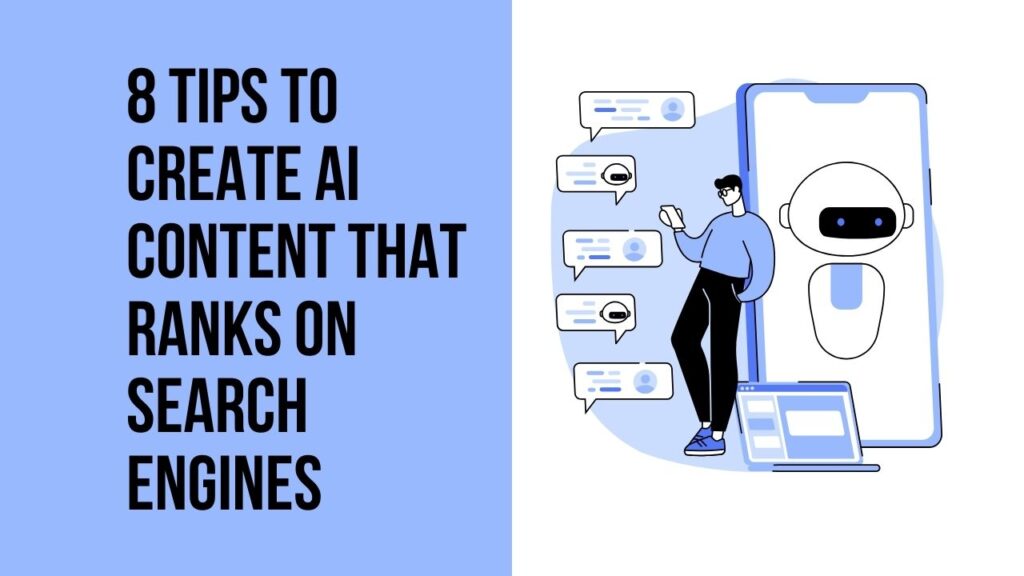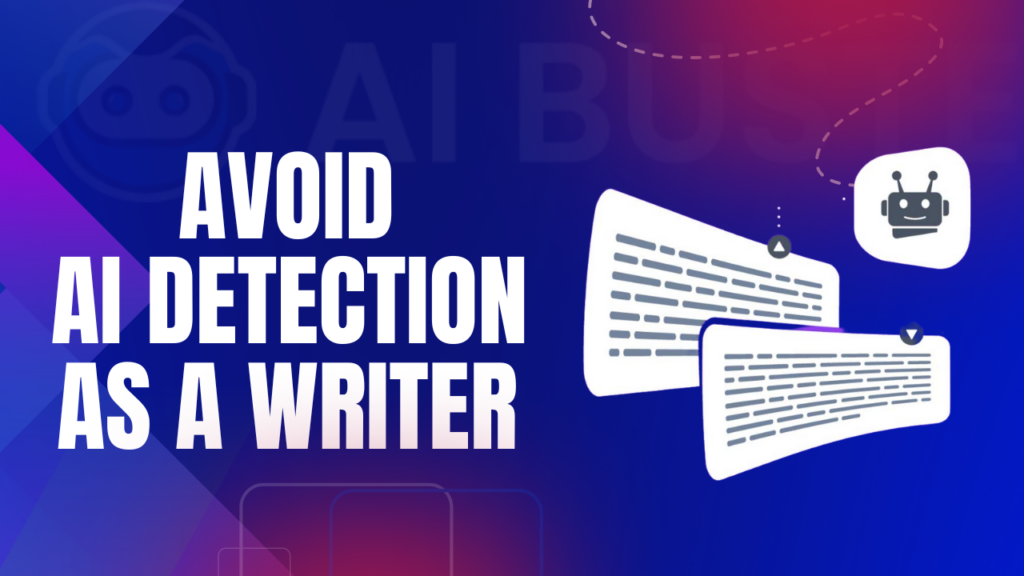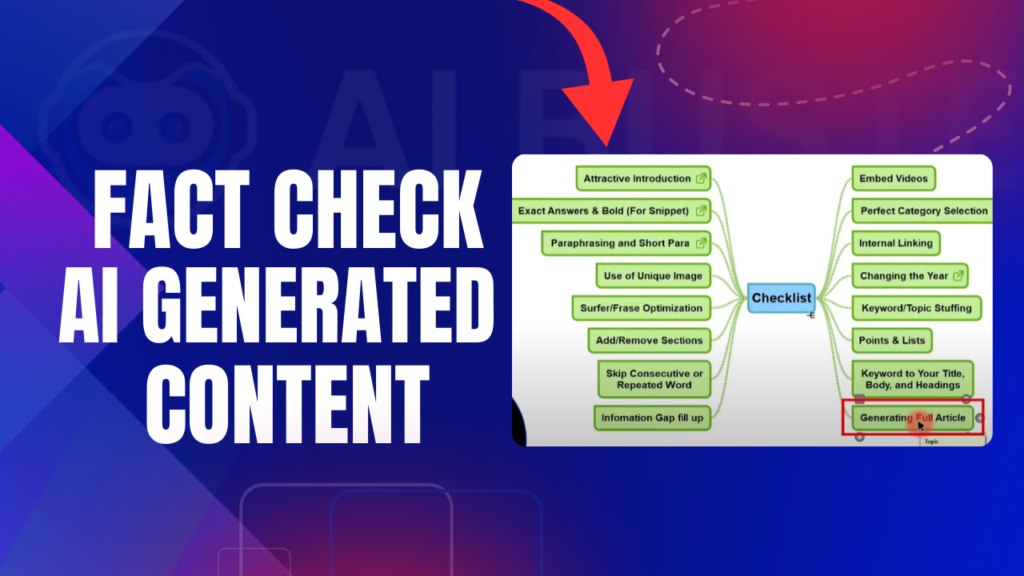AI-generated content is a buzz in the digital world. It’s a quick and cost-effective way for churning out a bunch of content and scaling up your online presence.
But here’s the big question: how much AI content is okay? The acceptability of AI content is an ongoing debate. Google doesn’t say exactly how much AI content is allowed. What matters to them is if the content is good and useful.
If AI content is high-quality and relevant to users, Google will put it up. For example, if it gives facts like sports scores, it’s likely fine. But if it’s spammy or not useful, Google might not like it. So, quality and being helpful are what Google cares about when it comes to AI content.
Is AI content a thumbs-up or down? Well, It’s a bit tricky to answer directly. Let’s dive in to uncover what Google prefers and what it doesn’t!
The Debate Over AI Content: Perspectives Unveiled
1. Arguments for AI Content
Those in favor of AI content highlight its transformative potential for content creation. These arguments include:
2. Arguments Against AI Content
Critics of AI content raise concerns about its limitations and potential drawbacks. These arguments encompass:
8 Tips To Create AI Content That Ranks On Search Engines
Ai is a great way to make your website, blog, or social media posts more interesting and optimized. However, all AI content is not the same. To make sure your AI content shows up well on search engines, follow these eight tips:

1. Define Content Goals and Audience:
Before you write, know what you want from your content and who you’re writing for. This affects how you write – the style, length, and tone.
If you’re explaining a complex topic, go for a formal, detailed approach. If you’re telling a funny story, keep it casual, short, and add jokes or anecdotes.
2. Add Quality Content while Striking a Balance:
Quality content is the secret to a rank on search engine. Make sure it’s unique, valuable, and engages your target audience. Maintaining quality is not everything; you need the right balance.
Cover your topic with adequate info, but don’t overdo it. Incorporate subheadings, bullet points, and relevant images to fine-tune your content for readability.
In terms of using AI contentt, remember to find the sweet spot. Google likes content that shows expertise, authority, and trustworthiness (E-A-T).
Human-made content has a special touch, giving readers and search engines something unique – a different perspective, creativity, and an authentic voice.
This mix ensures your content isn’t just primed for search engines; it also comes across as trustworthy and original.
3. Strategically Choose And Place Keywords:
Keywords are the words and phrases people type into search engines to find content like yours. They’re crucial for making your content visible to your audience.
To use them well, do some keyword research to understand what your audience is searching for and what your competition is doing.
Place keywords naturally in your content, like in the title, headings, introduction, conclusion, and meta tags.
Avoid overloading with keywords, as it can hurt your ranking and make your content seem spammy and unnatural.
4. Keep It Original & Unique:
Being yourself is super important when making AI content that stands out on search engines. It means your content isn’t copied or stolen from others.
Standing out means your content is different from what everyone else is saying. To keep your content unique, use your own voice and style.
Also, give credit to others when you use their words or ideas. Don’t just copy what everyone else is saying; make it yours!
Don’t forget to check the plagiarism with any tools. If you use the AI Buster content generation tool, you don’t have to do it separately, as AI Buster offers a built-in plagiarism checker.
5. Stay on Track and Align with User Intent:
When it comes to getting noticed by search engines, two things matter: relevance and user intent.
It means your content matches what people are searching for. User intent is about meeting your audience’s goals when they search.
For example, if they’re searching for “how to bake a cake,” they might want to learn, buy ingredients, or compare recipes.
To stay relevant and connect with user intent, get to know your audience’s needs.
Craft content that addresses their queries, offers solutions and brings value. Avoid content that’s off-topic, outdated, or confusing.
6. Check Grammar and Readability:
It is essential to ensure your writing is clear and accurate, shaping how others perceive and engage with it.
Grammar covers spelling, punctuation, and sentence structure, while readability refers to how easily people can comprehend your writing.
Factors like sentence length, word choice, and overall text presentation can impact readability.
Use tools like Grammarly or Hemingway to find and fix mistakes, make your writing clearer. Also, read through your writing yourself and get others to give you feedback.
7. Humanize Your Content:
Making your content more personal and interesting means adding feelings, humor, and storytelling. This helps you connect with your audience, build trust, and stand out.
To do this, talk to your audience like you’re having a conversation, use examples, and share your opinions. Avoid sounding robotic or boring to keep things lively and relatable.
8. Use a Great AI Writing Tool:
For successful AI content on search engines, opt for a top-notch AI writing tool. These tools, powered by artificial intelligence, streamline content creation, saving time and enhancing quality.
Not all AI writing tools are equal; some outshine the rest in features and performance. One such standout tool is AI Buster—a potent, versatile tool for crafting blogs, articles, and more.
AI Buster not only aids content creation but also optimizes it for search engines. With keyword suggestions, SEO tips, and plagiarism checks, it ensures quality.
The Verdict
It is undeniable that AI has transformed content creation. But, there’s no such thing like acceptable AI level, all it matters is quality and valuable content.
To meet search engine standards, it’s vital to find a balance between human and AI-generated content.
While AI helps generate content, the unique touch of human creativity can’t be replicated. Blend AI capabilities with human creativity for high-quality content.
For a reliable AI writing tool, check out AI Buster—it’s user-friendly, fast, reliable, and offers 3-day free trials, making content creation a breeze!




